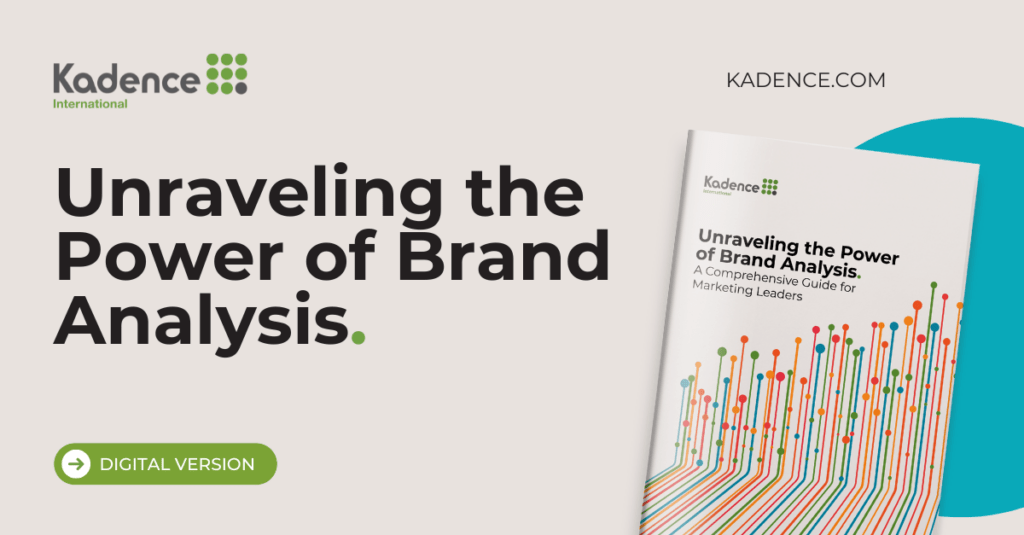Chief Marketing Officers (CMOs) today face significant challenges. Marketing budgets have declined sharply, dropping from 11% of total company revenue before the pandemic to just 7.7% in 2024. This decrease is forcing CMOs to reassess their strategies and make difficult decisions about resource allocation.
Simultaneously, the cost of digital marketing is rising. Platforms such as Google Ads, LinkedIn, Instagram, and Facebook are becoming more expensive. Additionally, the uncertainty around TikTok’s future in the USA and advertisers abandoning X.com (formerly Twitter) have caused advertising costs on other platforms to increase.
AI is emerging as a critical tool for enhancing productivity in this challenging environment. Gartner reports that many CMOs are investing in AI to improve efficiency and reduce costs. AI technologies are helping marketers optimise their campaigns, target customers more effectively, and make better use of their shrinking budgets. However, AI is still in its early stages and comes with its own set of challenges.
Looking back, past budget cuts had long-lasting impacts on brand health and growth. Now, CMOs must balance the need to drive immediate results with the importance of maintaining long-term brand equity. As they navigate this “era of less,” data-driven decision-making and strategic technological investments will be crucial for success.
The Decline in Marketing Budgets
Marketing budgets have significantly declined over the past few years. This reduction has forced CMOs to rethink their strategies and prioritise their spending more carefully.
Investments in marketing technology and agencies have also declined. Research shows that spending on marketing technology has dropped to 23.8% of marketing budgets, the lowest level recorded in a decade. Similarly, investments in agencies are on a downward trajectory as CMOs shift their focus to more cost-effective solutions.
In contrast, spending on paid media has increased. Paid media now accounts for 27.9% of 2024 marketing budgets, with digital media taking the largest share at 57.1%. Within digital media, search advertising leads with 13.6% of the budget, followed by social advertising at 12.2% and display advertising at 10.7%.
This shift in spending reflects the growing importance of digital channels in reaching and engaging customers. However, it also highlights the pressures CMOs face in delivering results with fewer resources. As they navigate this challenging landscape, CMOs must balance immediate performance needs with long-term brand health.
Rising Costs of Digital Marketing
The cost of digital marketing has been rising steadily, presenting another challenge for CMOs. Platforms such as Google Ads, LinkedIn, Instagram, and Facebook have become more expensive, driven by increased competition and demand. As more brands turn to these platforms to reach their target audiences, the cost per click and cost per impression has surged, straining already tight marketing budgets.
Adding to these challenges is the uncertainty surrounding TikTok in the USA. Ongoing regulatory scrutiny and potential bans have created an unstable environment for advertisers. This uncertainty has led some companies to reconsider investing in TikTok, further complicating their digital marketing strategies.
Meanwhile, advertisers are increasingly abandoning X.com (formerly Twitter). Concerns over platform changes and management decisions have driven many brands to pull their advertising dollars, leading to a significant exodus. As a result, the cost of advertising on alternative platforms has risen. This shift has increased demand on other social media channels, driving up prices as advertisers seek new venues to reach their audiences.
These rising costs across major digital platforms mean CMOs must be more strategic than ever with their advertising spend. They need to optimise their budgets, focus on high-impact channels, and leverage data to ensure they get the best return on investment. As digital marketing becomes more expensive, the pressure to deliver results with fewer resources continues to mount.
Leveraging AI for Productivity Gains
In the face of shrinking budgets and rising costs, many CMOs are turning to artificial intelligence (AI) to improve marketing productivity and efficiency. AI technologies are helping marketers optimise their campaigns, target customers more precisely, and use their resources better. According to research, time and cost efficiency gains are among the top benefits cited by one-third of marketers when assessing the return on investment of generative AI.
Generative AI, in particular, has shown promise in various aspects of marketing. It can automate content creation, personalise customer interactions, and analyze vast amounts of data to uncover actionable insights. These capabilities allow marketing teams to operate more efficiently and effectively, even with reduced budgets.
Specific AI tools like Google’s Performance Max provide marketers, especially those with smaller budgets, a competitive edge. These tools use AI to automate and optimise ad campaigns across multiple channels, maximising reach and performance while minimising costs. By leveraging AI, marketers can achieve better targeting, higher conversion rates, and improved overall campaign performance.
For example, Google’s Performance Max uses machine learning to dynamically allocate budgets and bids across its entire inventory, including YouTube, Display, Search, Discover, Gmail, and Maps. This ensures that ads are shown to the most relevant audiences at the right times, enhancing campaigns’ efficiency and effectiveness.
As CMOs continue to navigate the “era of less,” the strategic adoption of AI technologies will be crucial. By enhancing productivity and efficiency, AI can help marketers do more with less, ensuring their limited resources are used to maximum effect.
Strategic Adjustments for CMOs
In times of budget constraints, CMOs must adapt their strategies to ensure continued growth and brand health. Here are some key approaches they can take:
Focus on High-Impact, Short-Term Growth Initiatives
With limited budgets, CMOs should prioritise initiatives that offer immediate, measurable results. High-impact, short-term growth strategies can provide the quick wins needed to demonstrate ROI and secure future funding. These might include targeted promotional campaigns, limited-time offers, or performance marketing efforts that drive direct conversions. By focusing on these areas, CMOs can generate tangible outcomes that support overall business objectives.
Invest in AI-Driven Solutions to Maximise Efficiency and ROI
AI-driven solutions can significantly enhance marketing efficiency, allowing CMOs to do more with less. As previously discussed, tools like Google’s Performance Max and Microsoft’s Performance Max automate and optimise ad campaigns, ensuring that marketing dollars are spent effectively. Additionally, AI can be used for predictive analytics, customer segmentation, and personalised marketing, boosting campaign performance and improving ROI. By investing in AI, CMOs can maximise the impact of their limited budgets and achieve better results.
Prioritise Channels with Proven Effectiveness
In a constrained budget environment, allocating resources to channels that have demonstrated high effectiveness is essential. Search advertising, for example, continues to be a reliable channel, capturing 13.6% of digital spending. Its ability to target users with high purchase intent makes it a valuable investment. Similarly, email marketing, which accounts for 7.1% of digital spend, remains highly effective in driving conversions, loyalty, and advocacy. As the industry moves away from cookies, the importance of email marketing is expected to grow even further.
Focusing on these proven channels ensures efficient marketing efforts yield the best possible returns. CMOs should continuously evaluate the performance of their chosen channels, using data and analytics to make informed decisions about where to allocate resources.
Balancing Short-Term Gains with Long-Term Brand Health
While short-term growth initiatives are crucial, CMOs must also consider the long-term health of their brands. Cutting back on long-term branding efforts can have detrimental effects, eroding brand equity and reducing the effectiveness of future marketing activities. It’s essential to strike a balance between immediate performance and sustaining brand strength over time.
One approach is to integrate branding elements into performance campaigns. For example, consistent brand messaging and visuals in short-term promotional efforts can reinforce brand identity while driving immediate results. Additionally, maintaining a baseline level of investment in brand-building activities, even during budget cuts, can help preserve long-term brand health.
CMOs must navigate the “era of less” by making strategic adjustments that balance immediate growth with long-term brand sustainability. By focusing on high-impact, short-term initiatives, leveraging AI for efficiency, prioritising proven channels, and maintaining a commitment to brand health, CMOs can drive growth and navigate the challenges of shrinking budgets and rising costs.
Regional Considerations
Asia
Asia presents a diverse and rapidly evolving market with unique challenges and opportunities. One notable trend is the dominance of mobile internet usage. Mobile-first strategies are crucial in countries like China, India, and Southeast Asia, where a significant portion of the population accesses the internet primarily through mobile devices. Platforms like WeChat, TikTok, and regional e-commerce giants such as Alibaba and Shopee are central to digital marketing efforts.
However, the regulatory landscape in Asia can be complex, with varying rules regarding data privacy and content. Marketers must navigate these regulations carefully to avoid potential legal issues. Additionally, cultural diversity across Asian countries means that localised content is essential. What works in Japan may not resonate in Indonesia, so understanding and respecting cultural nuances is key to successful marketing in this region.
United Kingdom (UK)
In the UK, consumer behavior and marketing trends are heavily influenced by digital transformation. The UK boasts a high level of digital penetration, with consumers expecting seamless online experiences. Social media platforms like Facebook, Instagram, and LinkedIn are popular channels, and there is a growing interest in TikTok among younger demographics.
Economic uncertainties have led to cautious consumer spending. Therefore, marketers need to emphasise value and trust in their campaigns. Personalisation and data-driven marketing are critical in the UK, where consumers appreciate tailored content and offers. Additionally, sustainability and corporate social responsibility are important to UK consumers, and brands that demonstrate a commitment to these values often gain a competitive edge.
Europe
Similar to Asia, Europe is a region of vast diversity, with distinct markets across different countries. The European Union’s General Data Protection Regulation (GDPR) has significantly impacted digital marketing strategies, prioritising consumer privacy and data protection. Compliance with GDPR is essential, and marketers must be transparent about data usage.
Digital channels are widely used across Europe, but preferences can vary. For example, social media usage in Southern Europe may differ from that in Northern Europe. Local platforms also play a role; for instance, VKontakte is popular in Russia, while Xing is used in the DACH region (Germany, Austria, Switzerland) for professional networking.
Localisation goes beyond language translation; it includes cultural adaptation. Understanding local holidays, traditions, and consumer behaviour is crucial for creating effective campaigns. European consumers value authenticity and are wary of generic, one-size-fits-all marketing messages. Tailoring content to reflect local cultures and values can significantly enhance campaign effectiveness.
Importance of Localised Strategies and Cultural Nuances
Localised strategies and cultural nuances are vital for successful marketing across different regions. One-size-fits-all approaches are rarely effective in today’s globalised market. CMOs should invest in local market research to understand their target audiences’ specific preferences, behaviours, and expectations.
Cultural sensitivity is also important. This means avoiding cultural faux pas and actively engaging with and respecting local traditions and values. Brands that show genuine understanding and appreciation for local cultures are likelier to build strong connections with their audiences.
In summary, regional considerations are critical for effective marketing. By recognising and adapting to the unique trends, challenges, and cultural nuances, CMOs can develop strategies that resonate with local audiences and drive successful outcomes in diverse markets.
| Marketing Medium/Strategy | Relative Cost | Focus (Brand/Demand/Both) |
| Search Advertising | Medium | Demand Generation |
| Social Media Advertising | High | Both |
| Display Advertising | Medium | Both |
| Email Marketing | Low | Demand Generation |
| Content Marketing | Medium | Both |
| Influencer Marketing | Medium to High | Both |
| Event Marketing | High | Brand Focused |
| Sponsorships | High | Brand Focused |
| TV Advertising | High | Brand Focused |
| Radio Advertising | Medium | Brand Focused |
| Print Advertising | Medium to High | Brand Focused |
| Out-of-Home Advertising | High | Both |
| Affiliate Marketing | Low to Medium | Demand Generation |
| SEO (Search Engine Optimisation) | Low | Both |
| PPC (Pay-Per-Click) | Medium | Demand Generation |
| Video Marketing | Medium to High | Both |
| Podcast Advertising | Medium | Both |
| Native Advertising | Medium | Both |
| Programmatic Advertising | Medium | Demand Generation |
| Direct Mail | Medium | Both |
The Continued Importance of Market Research
Market research is crucial in informing strategic decisions for CMOs, especially in an era of constrained budgets and rising costs. Comprehensive market research provides valuable insights into consumer behaviour, market trends, and competitive dynamics, enabling marketers to make data-driven decisions that align with both short-term goals and long-term strategies.
Informing Strategic Decisions
Effective market research helps CMOs understand their target audiences, identify emerging trends, and gauge the effectiveness of their marketing campaigns. By leveraging qualitative and quantitative data, CMOs can tailor their strategies to meet their customers’ specific needs and preferences. This level of insight is essential for optimising marketing spend, ensuring that every dollar is used to maximum effect.
For instance, detailed market research can reveal which marketing channels are most effective for reaching a particular demographic, allowing CMOs to allocate their resources more efficiently. It can also uncover unmet customer needs, guiding product development and positioning efforts. Such precise targeting and informed decision-making are invaluable in an environment where budgets are tight.
Potential Pitfalls of Reducing Market Research Budgets
Despite its importance, market research is often one of the first areas to face budget cuts during economic downturns. This short-sighted approach can lead to several pitfalls. Without adequate market research, CMOs risk making uninformed decisions that could lead to ineffective marketing strategies and wasted resources. A lack of up-to-date market data can result in campaigns that fail to resonate with target audiences, ultimately diminishing brand effectiveness and ROI.
Moreover, reducing market research budgets can hinder a company’s ability to stay ahead of competitors. Competitors who continue to invest in market research will better understand market dynamics and consumer preferences, allowing them to capture market share more effectively. In the long term, this can weaken a brand’s market position and erode its competitive edge.
Balancing Immediate Growth Efforts and Long-Term Brand Health
While immediate growth initiatives are crucial for demonstrating short-term results, focusing on long-term brand health is equally important. Market research is essential for striking this balance. By continuously gathering and analyzing market data, CMOs can ensure that their strategies are both effective in the short term and sustainable in the long run.
Maintaining a robust market research program allows CMOs to adapt to changing market conditions and consumer behaviours. It also supports the development of long-term branding initiatives that build brand equity over time. For example, understanding consumers’ evolving needs and values can inform brand messaging that resonates deeply, fostering brand loyalty and advocacy.
Market research is a vital tool for CMOs navigating the challenges of shrinking budgets and rising costs. Market research helps marketers optimise their efforts, avoid costly pitfalls, and balance immediate growth with long-term brand health by providing the insights needed to make informed strategic decisions. As such, CMOS need to prioritise market research and ensure that it remains a crucial component of their overall marketing strategy.
Final Thoughts
CMOs are faced with the dual pressures of shrinking budgets and rising costs. The key takeaways for navigating this “era of less” are clear and demand decisive action.
First, CMOs must focus on high-impact, short-term growth initiatives while not losing sight of the importance of long-term brand health. Strategic investments in areas that drive immediate results, such as targeted promotional campaigns and performance marketing, are essential for demonstrating ROI and securing future funding. However, these must be balanced with efforts that sustain brand equity over time.
Second, leveraging AI-driven solutions is not just an option but a necessity. AI can significantly enhance marketing productivity and efficiency, enabling CMOs to do more with less. Tools like Google’s Performance Max are game-changers, offering automated optimisation to stretch limited budgets further. AI’s predictive analytics, customer segmentation, and personalised marketing capabilities are invaluable in this tight economic climate.
Third, market research must remain a priority. Cutting back on market research budgets is a risky move that can lead to uninformed decisions and ineffective strategies. Market research provides the critical insights needed to navigate market trends, understand consumer behaviour, and stay ahead of the competition. Maintaining a robust market research program ensures that strategies are both effective in the short term and sustainable in the long run.
CMOs must innovate and adapt to thrive in the “era of less.” This requires a balanced approach that leverages data-driven decision-making, strategic investments in AI, and a steadfast commitment to market research. The pressures of budget constraints and rising costs are significant, but with the right strategies, CMOs can drive growth, optimise resources, and build resilient brands. The time to act is now—embrace innovation, prioritise efficiency, and let data guide your decisions. In this new marketing reality, those who adapt will not just survive but lead the way forward.




 Senior Marketing Executive
Senior Marketing Executive Sales & Marketing
Sales & Marketing General Manager PR -Internal Communications & Government Affairs
General Manager PR -Internal Communications & Government Affairs Vital Strategies
Vital Strategies
 Customer Intelligence Director
Customer Intelligence Director